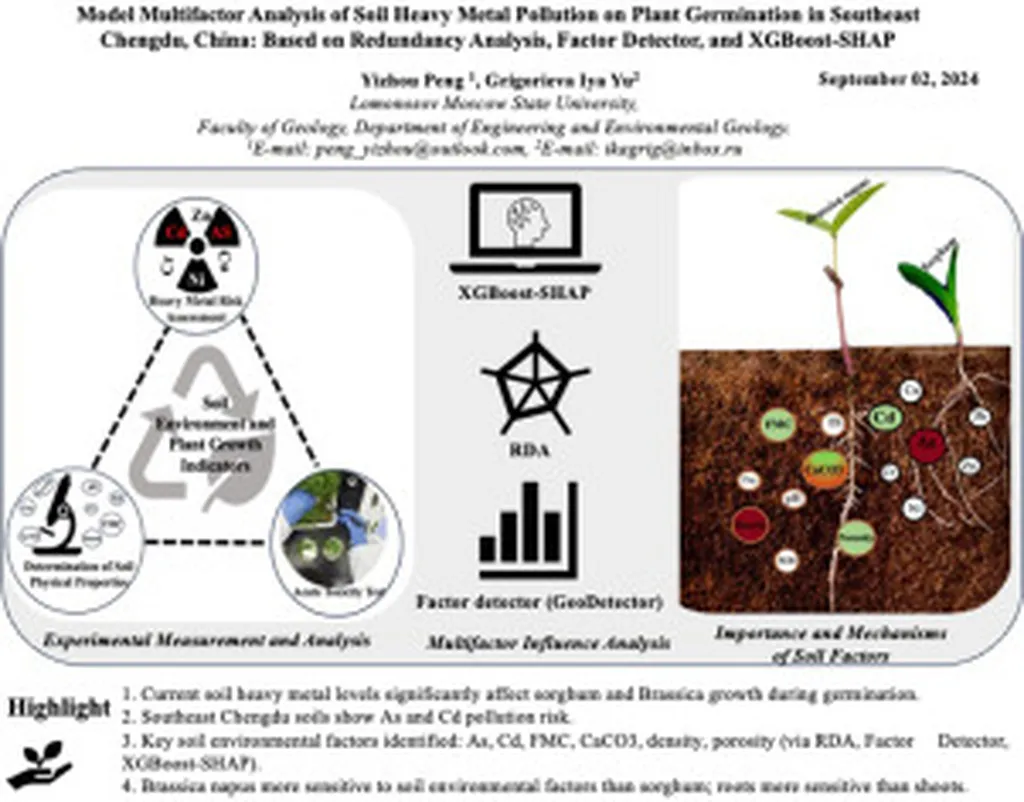In the heart of China’s Chengdu Plain, a silent threat lurks beneath the surface, one that could reshape the future of urban and peri-urban agriculture. Heavy metal (HM) pollution in agricultural soils is a critical issue, yet pinpointing the sources and understanding their impacts has remained a challenge—until now. A groundbreaking study led by Mengjing Ni from the College of Resources at Sichuan Agricultural University has shed new light on this pressing issue, offering a roadmap for targeted pollution control and sustainable soil management.
The study, published in the journal *Ecotoxicology and Environmental Safety* (translated as “生态毒理学与环境安全”), employs an integrated multi-model approach to identify and quantify the sources of heavy metal pollution in the Chengdu Plain. By combining Positive Matrix Factorization (PMF), GIS-based mapping, Random Forest (RF), Geo-Big data, Potential Ecological Risk Assessment (PERA), and Human Health Risk Assessment (HHRA), the research provides a comprehensive analysis of the problem.
“Our goal was to develop a robust framework that could trace the sources of heavy metals and evaluate the associated risks,” Ni explained. “By doing so, we aimed to provide scientific guidance for targeted pollution control and sustainable soil management.”
The study identified four major sources of heavy metals: natural sources (30.0%), mixed agricultural and transportation sources (29.5%), metal smelting activities (19.4%), and atmospheric deposition sources (21.1%). Risk assessments revealed that cadmium (Cd) and mercury (Hg) posed the highest ecological risks, while human health risk assessments indicated unacceptable health risks for children, with non-carcinogenic and carcinogenic risk probabilities reaching 4% and 10%, respectively.
“Source-specific analysis showed that both mixed agriculture and transportation sources (37.6%) and atmospheric deposition (37.9%) contributed most to the ecological risk,” Ni noted. “In terms of health risks, metal smelting activities (30.4%) contributed most significantly to non-carcinogenic risk, whereas mixed agriculture and transportation sources (42.7%) were the leading contributors to carcinogenic risk.”
The study identified Cd, Cu, Zn, Hg, and As as priority elements requiring urgent management. This research establishes a robust, multi-dimensional framework for tracing HM sources and evaluating associated risks, providing scientific guidance for targeted pollution control and sustainable urban and peri-urban agricultural soil management.
The implications of this research are far-reaching, particularly for the energy sector. As urbanization and industrialization continue to expand, the pressure on agricultural soils increases. Understanding the sources and impacts of heavy metal pollution is crucial for developing strategies to mitigate these risks and ensure the safety of our food supply.
“This study offers a blueprint for future research and policy development,” Ni said. “By identifying the priority control factors, we can focus our efforts on the most critical areas and develop targeted interventions to reduce the risks associated with heavy metal pollution.”
As the world grapples with the challenges of sustainable development, this research provides a beacon of hope. By leveraging advanced technologies and innovative approaches, we can protect our environment, safeguard public health, and ensure a sustainable future for generations to come.

